In today’s post, we go back to the basics of honey bees. First, we explore the honey bee colony: what it is, how it works, and who’s inside. Then, we discuss the deployment of hives on-farm.
Pollinators, such as bees, wasps, flies, and other insects and small animals are essential to crop production. Bees are considered some of the most important pollinators, of which honey bees, in particular, are widely regarded as the most economically important due to their widespread use in commercial pollination. Honey bee hives are deployed by the thousands across the US to pollinate an array of domestic crops, including blueberries.
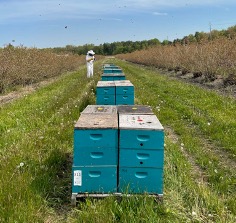
If you are a grower, you are likely familiar with this setup. Each assembly seen above is a group of four individual hives sharing one square platform. In this image, each hive consists of 3 boxes (hive sizes and number of boxes may vary depending on beekeeper management). The large bottom boxes are known as “deeps.” These boxes contain the honey bee larvae, or brood. The small upper boxes are known as “supers.” These boxes contain the majority of the honey. Each box contains eight or ten “frames,” where the bees draw wax comb to store honey and pollen, and rear brood.
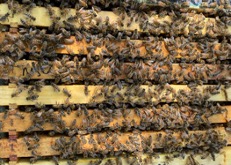
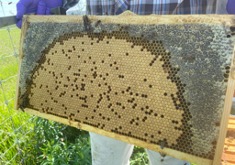
You have likely heard the terms “colony” and “hive” used interchangeably in reference to honey bees, but it is important to note that there is a distinction between the two. Think of the hive as the structure the bees live in, or in other words, their home. The colony, on the other hand, refers to the family unit of bees that live in the hive.
Honey bees are social insects, meaning they cooperate as a group in caring for their young, cleaning and protecting the nest, and feeding the colony. The colony is organized in a caste system, consisting of one reproductive queen bee, hundreds of male drones, and tens of thousands of sterile female workers. As the matriarch and only female with reproductive abilities, the queen is primarily responsible for laying eggs, sometimes over a thousand per day. Drone bees serve only one purpose, which is to mate with a queen. They do not contribute to any nest maintenance or output. The largest caste, the worker caste, is responsible for all other colony productivity, including foraging, brood care, honey production, and colony defense.
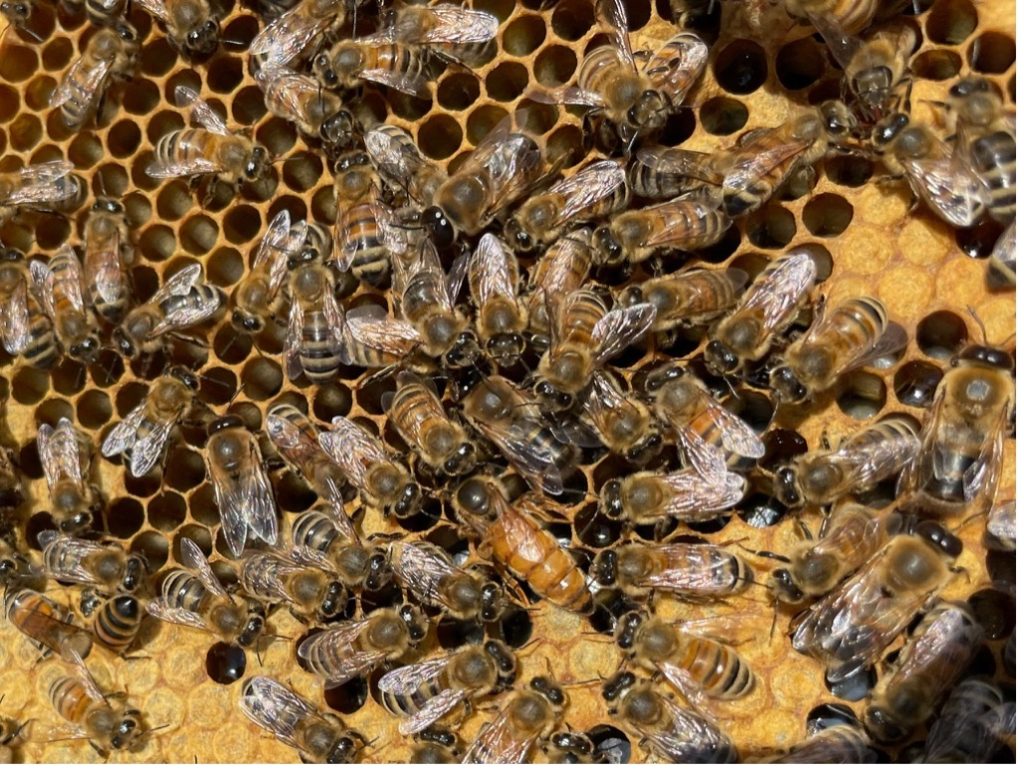
Towards the end of her lifespan, a worker bee transitions to the role of foraging, leaving the hive to collect food for the colony. Honey bees survive on a diet of nectar and pollen, both of which they gather from flowers. As a bee visits a flower to collect its resources, she becomes covered in sticky pollen thanks to the tiny hairs all over her body. When she visits the next flower, she will unintentionally leave behind some of the pollen from the previous flower. This is how insect-mediated pollination occurs.
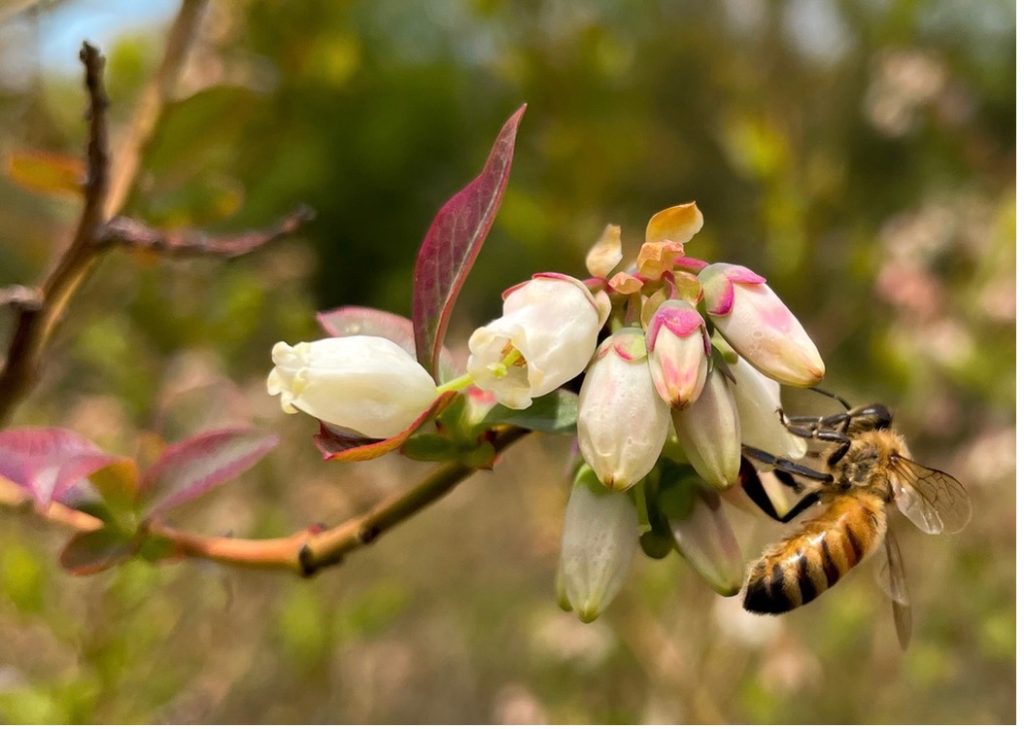
Foragers comprise roughly one-third of the total population of the hive. Foragers are the pollination workforce. The rest of the hive population is mostly made up of younger worker bees and brood, neither of which leave the hive or contribute to foraging/pollination. It is vital to have healthy, large colonies present for pollination to ensure an adequate number of mature worker bees to forage and provide pollination. The number of boxes on a hive does not necessarily indicate more bees available for pollination services.
One of the goals of our research is to develop methods to allow growers to quickly assess the strength of the colonies they have rented for pollination. We aim to understand the relationship between forager activity in the hives used in pollination contracts and flower visitation rates by foragers observed in the fields. This research will help us determine the extent to which colony strength, size, and stocking density combine to predict both the level of bee activity on flowers during bloom and crop yield. This analysis may also reveal whether individual colony strength or colony stocking density is more important in determining the number of bees visiting blueberry flowers. These findings will help to make improved recommendations for how many hives are needed per acre to provide an adequate pollination workforce for the blueberry varieties in bloom in modern farming systems.